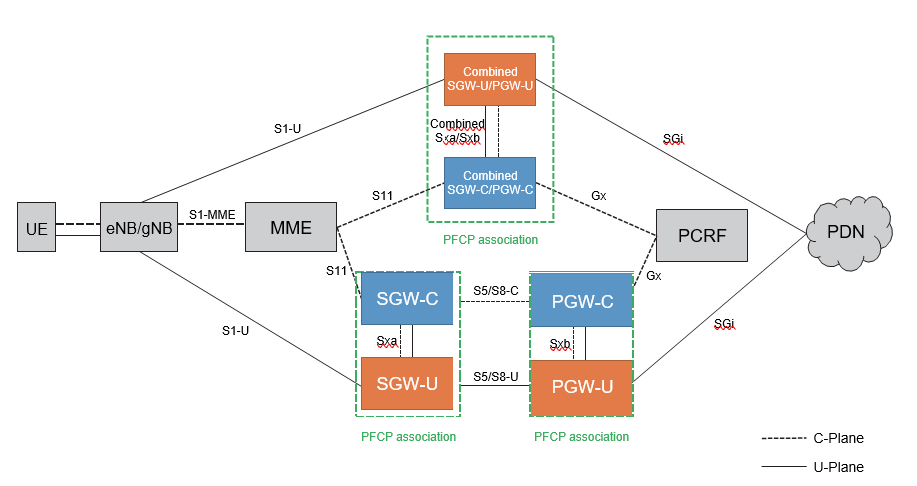Problem Statement
As applications based on 5G become more widespread, the need for EPC to achieve higher speed and capacity communications, lower latency communications, and simultaneous connection of many terminals than ever have become urgent. So It needs to understand the main idea of the Separation between the Control and User plane in the EPC. So Let’s start with the definition of Both.
- User Plane (U-Plane): The process of sending and receiving user data, which are the main signals for communication.
- Control Plane (C-Plane): A series of control processes that are exchanged to establish communications and authentication.
Conventional single gateway devices have both Control Plane (C-Plane) functions to manage communication sessions and control communications, and User Plane (U-Plane) functions to handle communications traffic. Therefore, if the balance between the number of sessions and communications capacity is disrupted, either the C-Plane or the U-Plane will have excess processing capacity.
In some scenarios we can see for example in high capacity, the signaling has excess processing power or on another hand, in another case, the user plane sessions are exceeding the C-Plane resources.
So the issue here: In the conventional devices with integrated C-Plane and U-Plane functions, the number of sessions and communication volume are unequally distributed among the gateway devices, resulting in a decrease in the efficiency of facility utilization.
CUPS Solution
Scaling the U-Plane and C-Plane independently means separation between them. For example in a 4G network when we have two main gateway nodes, Serving Gateway (S-GW) and Packet Gateway (P-GW).
CUPS is an architecture defined in 3GPP TS23.214 that separates the S-GW/P-GW configuration of the EPC into the C-Plane and U-Plane. For C-Plane, SGW Control plane function (SGW-C)/PGW Control plane function (PGW-C), and for U-Plane, SGW User plane function (SGW- U)/PGW User plane function (PGW-U) are equipped with call processing functions. By introducing CUPS, C-Plane/U-Plane capacities can be expanded individually as needed.
SGW-C/PGW-C have the C-Plane interfaces (S5/S8-C, S11, Gx, etc.) to handle the C-Plane and SGW-U/PGW-U have the U-Plane interfaces (S1-U, S5/S8-U, SGi, etc.) to handle the U-Plane.

Why CUPS?
CUPS will improve the resource distribution efficiency, especially in some distributed cases when we need the User Plane processing to be near the customer from a latency point of view. Since there is no need for distributed deployment of C-Plane functions if the C-Plane and U-Plane functions can be separated and the way they are deployed changed according to their characteristics, the loss of facility utilization efficiency related to C-Plane processing capacity could be greatly reduced.
Also, CUPS architecture makes it possible to scale the C-Plane and U-Plane independently and balance the centralized deployment of C-Plane functions with the distributed deployment of U-Plane functions, thereby enabling the deployment and development of a flexible and efficient core network.
CUPS will also enable independent equipment upgrades for C-Plane and U-Plane functions, and the adoption of U-Plane devices specialized for specific traffic characteristics.
